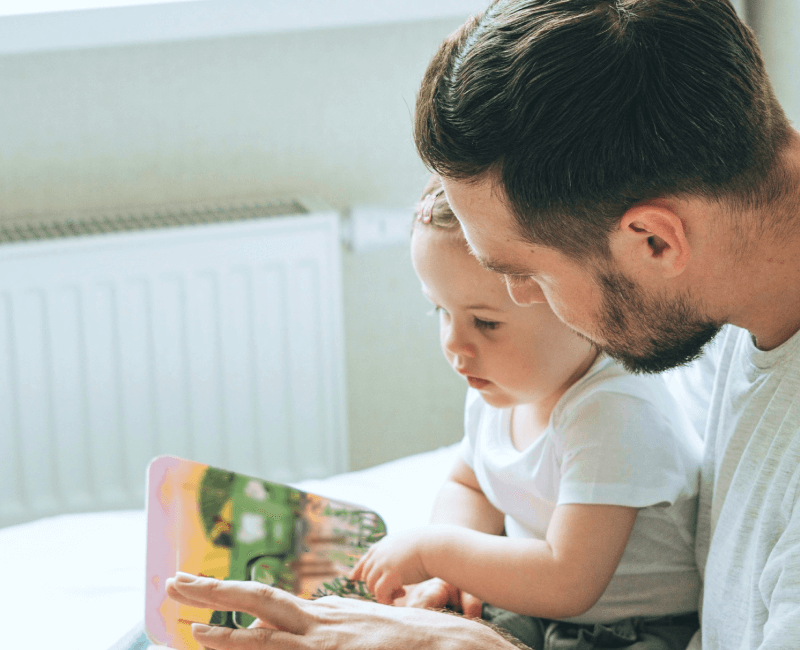Parent child interaction: the tools to support your child’s speech and language
So, after months of waiting you and your child have been invited to attend a Speech Therapy appointment. When your toddler’s speech or understanding is a little bit behind others of the same age, Speech Therapists could offer a type of intervention called ‘Parent-Child Interaction Therapy’ (PCI).
Parent Coaching
It seems obvious, but no-one knows your child better than you! PCI therapy coaches you to be your child’s primary communication teacher. The Speech Therapist is there to teach you the skills and strategies you will need to optimise the time you spend with your child to improve communication. Through structured coaching, the Speech Therapist keeps you on track, gradually providing more strategies and giving feedback and goals to progress. The great thing is, PCI strategies can be incorporated into your everyday life! So I will include an activity for you and your child to try whilst on the go.
What is PCI?
Parent-Child Interaction: the facts
Sheila Eyberg developed Parent-Child Interaction Therapy in the late 1970’s as a way to help improve a child’s behaviour and enrich family relationships. Although originally developed for psychologists, over the years the PCI approach has been adapted for speech and language therapy as it is a great way to encourage parental involvement in intervention.
Parental roles have evolved through the years and instead of being an observer, they are now a ‘key-player’ in their child therapy (Hanen, 2011).
Parents are the best teachers
Toddlers learn everything from listening to you and the people around them. To illustrate this point, a study by Hart and Risley (2003) found that 86-98% of the words in children’s vocabulary were also recorded in the parent’s vocabularies. This shows that parents are their child’s first teacher; so involving you in therapy is not only logical, it’s vital!
Long term results
Studies have shown PCI to be very effective in improving a child’s language, and it’s not a temporary improvement. Improvements in communication and behaviour were still present two years after therapy begun (Russ & Niec, 2011). This sustained improvement could be because during PCI parents learn techniques that they can use throughout their child’s development, rather than just throughout the actual therapy.
Which techniques are used in PCI?
Comment don’t question
Too many questions can cause children unnecessary anxiety and often if your child’s language use is delayed, their understanding may be too.
But I’ve got to show you what they CAN do!
As a parent you might think you’ve only got half an hour to show to the therapist everything your child can do and say, so asking them questions seems like a really good idea. BUT, let’s think about it from your child’s point of view: your child has just entered this unfamiliar environment with this stranger who is watching them, and now their Mummy/Daddy is asking them lots of questions… Yikes, sounds scary, doesn’t it?
Why is commenting better?
Let’s go back to the point above, if I were in this situation I would probably shut myself off and stay very quiet and that’s the opposite of what we, as therapists and parents, want your child to do! If children shut themselves off they won’t hear any of the lovely language we’re trying to help them learn.
In comparison, commenting does not put any extra demands on your child and instead gives them more opportunities to hear language.
The more a child hears language, the more likely they are to imitate new words and increase their vocabulary.
Let me see how it works
Commenting helps engage a child in play and supports their social interaction skills. This video demonstrates a parent who is using commenting rather than questioning during play, and you can tell that the child is really engaged. Through the video, you can hear the child repeating what the parent is saying (“squish, squish, squish!”). This shows how in a natural play setting between a parent and a child, language can flourish!
Recasting
Recasting is where you repeat what your child says, adding new words to make the sentence longer and more accurate.
What do you mean?
Here’s an example. Let’s say you’re playing with your child and they say, ‘Look mummy! Car drive’ you could recast by making the sentence longer and more accurate by saying ‘Oh yes, I see, the car is driving.’ Recasting helps model complete sentences for children to repeat and it also emphasises function words like ‘is’ and ‘the’, which are often omitted from a child’s speech. Just like commenting, this helps children hear brand new vocabulary, and the more they hear words, the more they are likely to say!
Activity to help you practice PCI techniques
Activities are best when they form part of your toddlers daily routine. I have decided to give you a practice activity around bath-time. Let me show you how to use comments, not questions and recasting at bath-time to support your child’s language.
1. Narrate
Tell your toddler what you are doing at every stage of the process. This takes a bit of getting used to but as your child connects the words you are saying with the actions they can see, they will begin to develop their understanding too!
‘off we go, we’re going for a bath, let’s open the bathroom door
turn the handle and push!
time to get undressed – one arm, two arms and over your head’
In this tiny bit of narrative, you have given your child the words for body parts and action words they wouldn’t hear if you were simply asking questions.If you are feeling even more creative, you could make up a story! The adventures of ‘Mr. Duck’. You could pour some bubbles into the bath, prompting you to say “Mr. Duck wants lots of bubbles”. Your child may repeat ‘bubbles!’
2. Recast
You could then recast saying, “lots of bubbles" etc. This narration activity is so simple yet could really make a difference in the amount of language a child hears. It could be used when cleaning, shopping, getting dressed, cooking and other parts of your routine.
What vocabulary should you use?
One of the biggest struggles when you first start activities like this are actually thinking of what to say, so here is an example of some vocabulary to help get you started, scroll through to have a look:
Nouns:
Mummy, Daddy, bath, potty, iPad, ball, juice, biscuit
Verbs:
eat, drink, sleep, nap, wee wee, swinging, jump, play
Pronouns:
I, me, he, she, they, them, mine, yours
Adjectives:
big, squishy, soapy, hard, heavy, sparkly, dark, loud
Social words:
Hello, bye-bye, thank-you, please, more, up
Vary your language
If you ask your child the same questions over and over e.g. ‘what’s that’, guess what their first two-word phrase is going to be… ‘what’s that?’ Children’s brains are like little sponges and when they hear the same phrase repeated, they will use it. Varying the type of words and phrases you use will support your child’s language to develop and grow.
It’s ok to ask for help!
As therapists we understand how difficult getting started can be! Commenting, recasting, not asking questions; it’s difficult to adapt the way you communicate with your child. And we get it! If you would like more information on PCI don’t hesitate to talk to a Speech and Language therapist. They are here to help.
- General Speech & Language (18)
- Speech and Language Therapy (17)
- Social Communication (10)
- Speech Sounds (6)
- Autism Support (4)
- Language Delay/Disorder (3)
- Safeguarding (3)
- AAC (2)
- Relationship Issues (2)
- SEMH (2)
- Absenteeism (1)
- Autism (1)
- Classroom Behaviour (1)
- Cleft Lip/Palate (1)
- Counselling (1)
- Funding (1)
- General mental health (1)
- Generalised anxiety (1)
- MATs (1)
- OCD (1)
- Phobias (1)
- Primary Schools (1)
- SENCOs (1)
- School Issues (1)
- Secondary & Sixth Form Schools (1)
- Stammering (1)
- Trauma (1)
You may also like
These related stories

How to help your child develop their speech and language skills

How to help your child to start talking
